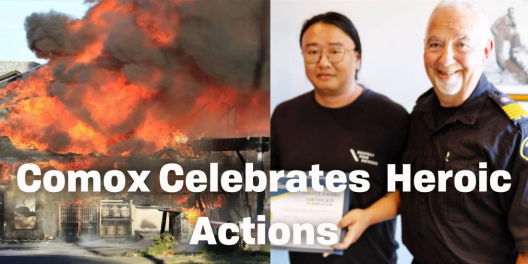Port McNeill Council had a presentation from the Connected Coast Project last week.
The project intends to bring high-speed internet to the entire Island.
It will place of 3,400 km of underwater fibre-optic cable from north of Prince Rupert to Haida Gwaii, then south, around Vancouver Island, and finish up in Vancouver. Placing the cable has been completely funded.
The project plans to place a landing site in Port McNeill, and the presenters came well prepared to a council meeting with detailed suggestions for ‘next steps.’
But the plan didn’t seem to be connecting with council members.
The overall project is well underway, with the Port McNeill landing permits being one of the last ones needed on the coast.
This didn’t stop the council from grilling presenters.
First, they didn’t seem to be on board with the choice of location for the landing site.
It’s at the end of Beach Drive, next to the last house and the town-owned waterfront property known as Hoy Bay.
The cable is only about the diameter of a thumb and would be buried underground near the edge of the road. So the public would still have open access and wouldn’t see much of a difference from the surface.
However, the council seemed concerned with the idea of having a large electrical cable beneath a public beach.
Councillor Leighann Ruel started off the questioning, asking, “has the property owner that is next to this been approached? Are they in support of this?” Later adding, “I wouldn’t want that next to my house.”
The presenters seemed unsure of this, adding they’d confirm and follow up.
Council suggested that Beach Camp, at the end of Mine Road, would likely be a much better site, but the idea was rejected.
The presenters listed that the land is privately owned and eelgrass is present, a protected plant which they’re avoiding “at all costs.”
“We vetted all the other landings, you know, sometimes there isn’t a perfect fit, but we feel this one, again, is the top choice for a myriad of reasons,” said Project Lead Wes Eisses.
The myriad of reasons seemed a bit vague.
Councillor Shelley Downey didn’t seem convinced, asking to see the eelgrass studies on the location and if they were just “pulled from a shelf.”
Presenters responded that the studies had been done specifically for the project.
The eelgrass back and forth, though, seemed to be a cover for misgivings towards the project.
The questioning seemed to revolve around council members feeling that the project is really nothing the city needs.
Downey stated outright that Port McNeill is already well served with fibre.
“So I don’t see an upside to what you are offering us.”
Connect Coast responded, “[i]t would allow for inherent competition [between telecommunication companies], and providing service to the residents of your community.”
In order for the city to actually benefit from the landing site, though, they would have to establish the so-called ‘last mile connection.’
That essentially means hooking up the network to homes and businesses. This is not funded. It is up to communities to make this happen.
But council didn’t seem convinced by the idea.
After the virtual presenter left the meeting, the council continued to discuss the matter among themselves.
Councillor Ann-Marie Baron stated, “I still don’t understand what they are trying to do.”
Mayor James Furney said they should wait to see the eelgrass study, ending the topic with “let’s shelve this one.”
Port McNeill is one community that may not see any great leaps in access from the project. But the Connected Coast project will also reach places like Holberg, Winter Harbour, and Mitchell Bay, that lack ‘50/10’ internet.
Nuu-chah-nulth communities like Kyuquot, Ehatis, Hot Springs Cove, Ahousaht, Hesquiaht and Tla-o-qui-aht reserves are just a few of the areas without any good internet that will benefit from the project.
It will also reach the most remote areas with little to no internet, like Cape Scott, Kains, and Pine Island.









